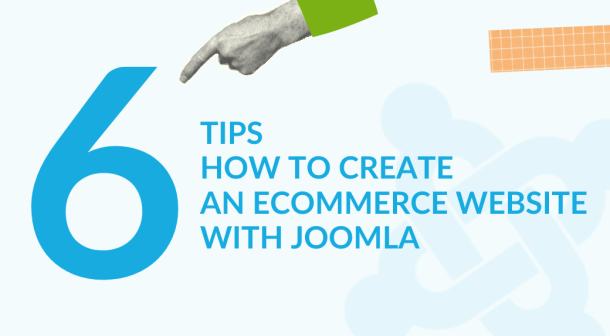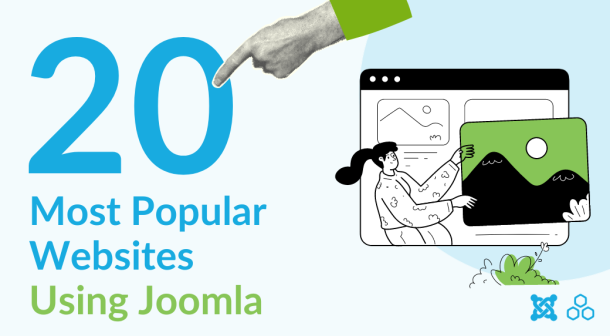
Get Unlimited Plan
Get access to our all Joomla & WordPress themes, extensions, plugins and templates.
7 Current Web Design Trends for Joomla Users and Developers
As web design changes, you want your website to remain modern-looking and professional so that you stay caught up. Joomla is a veteran among content management systems, but it still has a lot to surprise you. Professional web design studios that create Joomla templates understand that and try to implement new trends and features as soon as they appear on the horizon. We decided to illustrate each trend with a Joomla template example.
So, what design techniques will be ruling the roost in 2024? Let’s have a look. Here’s the list of what we consider to be the major web design trends for 2024.
Multipurpose Design in Joomla Webdesign
Why opt for a multipurpose website design? It allows you to choose a design by its layout and functionality and not by its topic. That’s why content-first templates are so popular: they allow you to divert your visitors’ attention from the user interface of your website to its actual message.
The ‘one-type-fits-all’ approach is a winning strategy if you are designing website templates for sale. Promoting it as a multipurpose product will allow you to access a broader target audience and, as a result, more money. The main difficulty is that you have to pay attention to every detail to ensure cohesion between all the template’s functions.

Clean Flat Design in Joomla Service
Flat design doesn’t necessarily equal minimalism, but these two trends often go hand in hand. Both profess the UX-first approach to designing web pages.
Flat design relies on plain colors, sharp lines, simplicity, and clarity of all design elements. However, pure flat interfaces may seem dull and repetitive, as more and more web designers tend to implement this trend as is without adding any personal touch.
And here comes material design, which Google introduced and actively promoted. It is just as clean as it is flat, but it also harks back to its skeuomorphic roots by using shadows and pseudo-3D effects. Google, as one of the most influential trendsetters, is set to shape the future of web design over the next several years. Material design, with its innovative use of shadows and pseudo-3D effects, will undoubtedly be a top choice for web designers looking to stay ahead of the curve.

Advanced Navigation for Joomla Develop
Website navigation is the keystone of user experience, so making it convenient and informative is the number one task for every web designer. Modern navigation types are not limited to dropdown and mega menus.
‘Mega’ stands for complex menus with multiple columns displaying links to categories and pages, banners, videos, and other types of rich content. They are trendy in eCommerce, where a well-positioned call-to-action element can encourage a visitor to purchase.
If your pages are long and scrolling, make your menu bar sticky so visitors can always access it. This is especially important if your design includes infinite scrolling. In this case, you should include a back-to-top button.
The good news is that you can combine all the menu types, simultaneously making your navigation sticky and enhanced with ‘mega’-functionality.

Extensive Use of Dynamic Elements in Joomla Webdesign
Modern eCommerce relies heavily on dynamic web elements, which are only possible with supporting scripts. These scripts are the driving force behind the entire process, from adding a product to a cart to checkout and credit card verification, creating a wish list, and tracking customer location. Without these dynamic features, your online store would be a mere product showcase, lacking the automated selling functionality necessary for a website in the 21st century.
Other personalized website types, such as social networks, bookmarking services, and forum boards, are also heavily dependent on this trend.
But be careful: excessive use of scripts may slow down your website, so if you are planning to launch a simple personal website, don’t overload it. It's better to personalize it in a more ‘human’ way.

Focus on Media in Joomla Service
90% of all information we perceive comes to our brain through our eyes. This fact makes engaging media such as images and videos an ace in the hole for those web designers who use them wisely. Professionally designed image-based websites look stunning, just like glossy magazine pages. This approach grants your visitors complete immersion and delivers an unmatched user experience.
Background videos are relatively new to the web, but they have already proven their effectiveness as boosters of user engagement. Embedded videos placed on product pages are also a great way to educate your customers and increase your store's conversion.

Card Design and its Variations for Developer Joomla
If your website aims to present uniform content, the card design trend is for you. If you are not sure what those ‘uniform pieces’ are, here are some examples: tweets on Twitter, posts on Behance or Dribble, profiles, and announcements on various job portals and marketplaces.
Typically, each item consists of an image that attracts attention, a chunk of text that gives your visitors an idea of what the post is about, and some additional metadata: tags, badges, ratings, and so on. Such a card briefly describes each aspect of a post, saving page space and boosting user engagement.
The card design trend offers a canvas of creativity for your web design. There are numerous ways to implement this trend, from building a masonry grid website with cards forming the bulk of the layout to using them for individual content blocks. The versatility of this trend is sure to inspire your creativity and bring a fresh perspective to your web design.

Website Builders Like YOOtheme Make Joomla Webdesign Easy
One of the most exciting trends in Joomla web design is using website builders like YOOtheme. YOOtheme allows users to create stunning websites without any coding knowledge. With its intuitive drag-and-drop interface, you can quickly build pages, customize designs, and add dynamic content. This makes website creation accessible to beginners and professional Joomla developers.
Building a Joomla website has always been challenging with YOOtheme. It offers a wide range of pre-designed templates and elements that you can customize to fit your needs. Whether you are creating a personal blog, a business site, or an eCommerce store, YOOtheme provides the tools and flexibility to effortlessly create a professional-looking website.
Conclusion
Being trendy doesn’t mean being mainstream, at least not in web design. Behind every trend are months of research conducted by experienced UX specialists and financed by large corporations. If you are skeptical about any of them, look closer. Perhaps it is just what you need to skyrocket your business.
Joomla web design evolves, and staying up-to-date with the latest trends can help you create a modern and engaging website. By incorporating these trends and utilizing tools like YOOtheme, you can ensure that your Joomla site stands out in 2024 and beyond. Whether you are a seasoned developer Joomla expert or new to the platform, these trends and tools will help you create a functional and visually appealing site.


